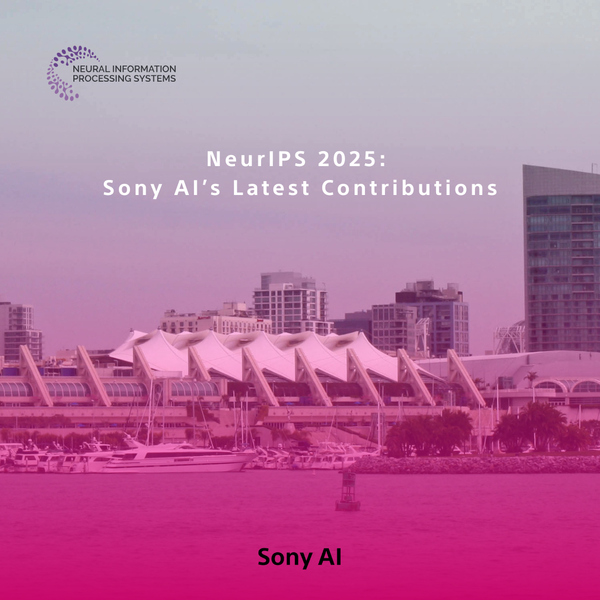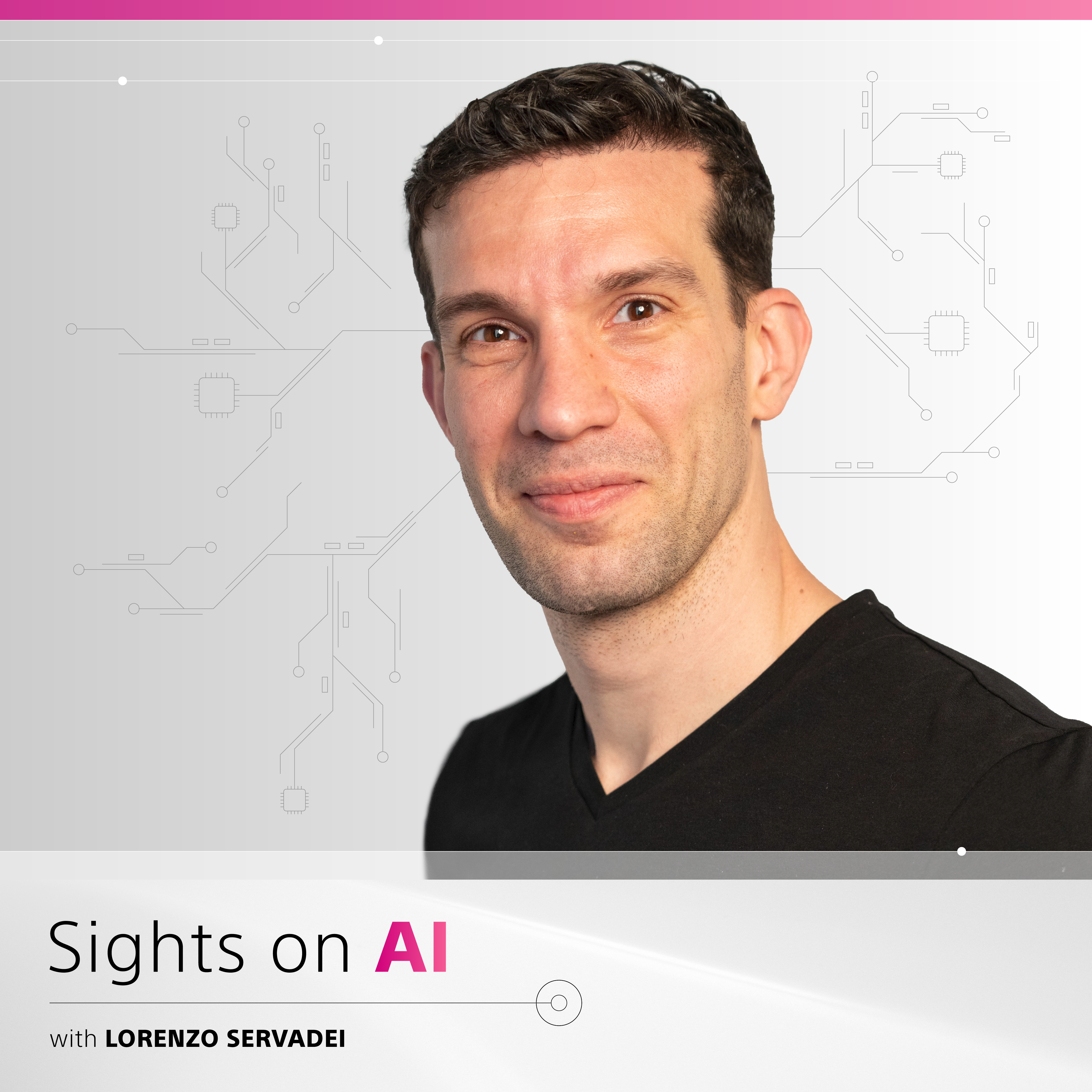Sights on AI: Lorenzo Servadei Discusses Impact of AI on Chip Design and Semiconductors and How AI Will Aid the Industry’s Future Development
Sony AI
September 13, 2024
The Sony AI team is a diverse group of individuals working to accomplish one common goal: accelerate the fundamental research and development of AI and enhance human imagination and creativity, particularly in the realm of entertainment. Each individual brings different experiences, along with a unique view of the technology, to this work. This insightful Q&A series, Sights on AI, highlights the career journeys of Sony AI’s leaders and offers their perspectives on a number of AI topics.
Peter Stone ・ Erica Kato Marcus・ Tarek Besold ・ Yuki Mitsufuji ・ Lorenzo Servadei
Lorenzo Servadei is a Senior Researcher and Head of AI for Chip Design within the Imaging and Sensing Flagship at Sony AI. He specializes in developing machine learning algorithms to support the Electronic Design Automation (EDA) field as well as semiconductor roadmap and strategy.
Lorenzo received his PhD from Johannes Kepler University Linz, where he studied Machine Learning and Deep Learning approaches in Firmware and Hardware Optimization and Trade-off Analysis. Today, Lorenzo and his team are at the forefront of exploring how AI-powered EDA unleashes innovation in multi-physics device technologies. They are focused on researching and creating machine learning models that enable optimal performance for the design and fabrication processes of chips and semiconductors.
In this blog, Lorenzo shares his inspiration for pursuing a career in AI and semiconductors, discusses the current impact of AI on chip design and the semiconductor industry, as well as how it will aid in future development. He also delves into how Sony AI is thinking about fusing engineering and AI to push the bounds of what is possible.
What inspired you to enter the fields of AI and semiconductors?
For my Master's degree, I studied subjects closely related to traditional computer science and algorithmics, at a time when AI was not widely seen as a specific area of study. This academic path led me to pursue a career as a software developer and eventually as a backend lead.
While working in software development, I had the opportunity to join a semiconductor company that was seeking AI experts. It allowed me to explore the algorithmic aspects of AI, which intrigued me. The world of AI was incredibly fascinating and powerful compared to the traditional coding and programming I was accustomed to. Integrating semiconductors with AI was also an area that captured my interest. At the time, I planned to explore it further as part of this new opportunity and my PhD program.
As I worked to help develop methodologies for real-world chip systems and pursued my PhD, I was motivated to focus the next phase of my career on research that would have a tangible impact on the semiconductor industry. I wanted to pursue research in the space that was theoretically valuable, practical, and applicable in real-world scenarios, which led me to Sony AI.
Is there a particular area of semiconductors where you see AI having the most significant impact?
The semiconductor industry still has so much to explore regarding AI. When you consider the physics and engineering required in the design and manufacturing processes for chips and semiconductors, we have barely scratched the surface of what could be achievable. With evolving technological needs, there is untapped potential in chip and semiconductor design and manufacturing.
At this point in time, AI has significant potential to initially help optimize processes – quicker designs, saving power, and iterating faster. Down the road, I believe there is potential for AI to be used in the generation of new architectures and products and to introduce novel materials and methods used in the manufacturing process.
At a granular level, this will be done by inserting physics into the AI models, which is very specific to semiconductor and engineering problems. When you think of generating images with AI, for example, there is no hard constraint on what you can generate. In engineering, we frequently encounter solutions that cannot be effective or are not physically realizable. To tackle this issue, we can improve AI models by incorporating physics constraints to address non-working aspects and adding information to increase performance.
How are you and the Sony AI team looking at AI’s impact on the semiconductor industry?
Today, AI enables the regulation, control, and optimization of complex architectures within chips (semiconductors) utilized in automotive, consumer electronics, and industrial applications in ways that were previously impossible. AI also allows organizations to explore how to address the complexities surrounding the specific design and manufacturing processes and how to enhance them.
Given Sony’s extensive leadership in image sensors and Sony AI’s deep expertise in AI, we have a unique opportunity to research the intricacies and potential of a new generation of these technologies powered by AI. And, as a company focused on creators of all kinds – from engineers to artists – our goal is to integrate AI into both the design and manufacturing areas and combine them, ultimately enabling optimal performance and helping technical creators to increase innovation.
We are looking at this in the realm of image sensors. These sensors, in particular, are fascinating devices where multiple types of physics (optics, semiconductor, etc.) and design stages (analog, digital, etc.) interact, so we must tackle these complex systems with powerful methods.
Recent advancements in AI have created sophisticated methods with both generative and optimization capabilities. Some of these methods can incorporate physics information and combine it with data-driven algorithms, making them promising for image sensors.
As part of the AI for Chip Design project within Sony AI’s Imaging & Sensing Flagship, we aim to utilize and extend these methods. We’re exploring large language models (LLMs) and physics-informed neural networks, in particular, to generate, optimize, and improve state-of-the-art image sensor electronics.
How is Sony AI thinking about this research from the creators' point of view and its impact on their work?
A common notion is that creators are typically associated with fields like art, writing, entertainment, and gastronomy. However, at Sony AI, we view creators as individuals who introduce new and innovative technologies and experiences to the world. This encompasses artists, engineers, and other technical professionals developing hardware such as image sensors and chips.
We strive to empower these technical creators within the semiconductor industry by utilizing AI to reduce the repetitive processes they face in design and manufacturing – which can be a barrier to innovation. Our goal is that the new tools we are researching and developing will provide the support necessary to create cutting-edge innovations, from advanced circuits to new methodologies and processes.
Sony’s image sensor technology also powers some of the most advanced artistic equipment for both consumers and professional creators. We look forward to the impact our work could have on the users of these products.
Our partners at Sony Semiconductor Solutions Corporation (SSS) have the world’s largest share of the image sensor market. They boast a lineup of high-performance image sensors tailored to a diverse range of needs in various fields, including those for industrial use, those used in consumer cameras, and those for automotive and mobile applications.
For more information on Sony AI’s AI for Chip Design project within the Imaging & Sensing Flagship, visit here.
Latest Blog

December 15, 2025 | Sony AI
Protecting Creator’s Rights in the Age of AI
The rise of artificial intelligence technologies that can generate songs and mimic musical styles and artists has led to a surge in AI music content with unclear origins, prompting…

December 1, 2025 | Events
NeurIPS 2025: Sony AI’s Latest Contributions
NeurIPS 2025 brings together work across Sony AI that targets real problems in real settings. The research in this roundup focuses on models that adapt under constraints, handle fr…

December 1, 2025 | Sony AI
Advancing AI: Highlights from November
November was a pivotal chapter for Sony AI, marked by the debut of our ethics project FHIBE, a consent-driven benchmark years in the making, and a trio of blogs that traced its fou…







